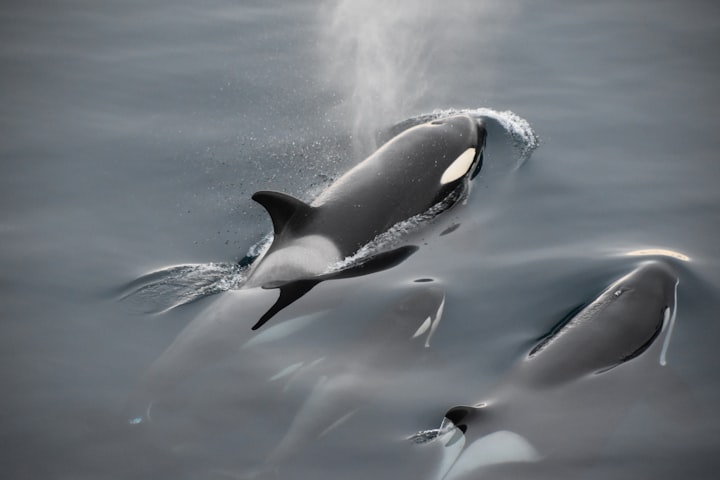How Pollution Affects Killer Whales In Utero
A new study on how pollution affects killer whales examines maternal transfer between mother and calf.

Over the last few decades, research on wild killer whale populations has given insight into how man-made toxins affect their survival and reproduction ability. This is especially considering killer whales are one of the ocean’s top predators. The pollutants, which make their way into the sea through inland runoffs, get through the marine food chain, getting sorted into animal body tissue after ingesting.
In the Pacific Northwest, for example, the marine food chain comprises zooplankton feeding phytoplankton, krill feeding on zooplankton, salmon feeding on krill, and Southern Resident killer whales feeding on salmon, which has become endangered in that region, because of habitat loss pollution, and over-fishing. For the marine mammal-eating transient orcas, dolphins, porpoises, seals, and sea lions feed on salmon while the transient orcas feed on the same animals that feed on them. As a result, the prey animals that contain toxins in their bodies can pass them on to the animals that are on a higher ladder of the food chain. This makes it easy for pollutants to concentrate and reach dangerous levels in their bodies.
Now that we know how killer whales are considered being one of the most intoxicated marine mammals in the Pacific Northwest, can they also be passed down to their calves? The answer, unfortunately, is yes.
What Did the Study Focus On?
In a study that was published on December 13th, 2022 in Environmental Science and Technology, Researchers focused on transferring a series of previously undiscovered pollutants in both Southern Resident and Transient killer whales. These pollutants included selected contaminants of emerging concern, or “CECs”, and new persistent organic pollutants, or “POPs”.
Because the researchers were focused on in utero transfer of these containments, they turned to skeletal muscle and liver samples that were collected from various necropsies between 2006 to 2018. The samples were taken to a lab to be cleaned and analyzed for further examination.
What Did They Find?
Their findings showed these chemicals are prevalent in these animals. In the samples, the 4-nonylphenol was one of the most common chemicals that made up around 46 percent of the animals. Known as 4NP, it's an organic compound that’s found in pulp, paper, detergents, soaps, and textile processing. This dangerous chemical makes its way into the sea through runoff and sewage treatment plants.
Once the chemical makes its way into the sea, it undergoes a process called bio-magnification, a phenomenon in which toxic chemicals build up along food chains from smaller organisms to apex predators. Another chemical that was found in the samples was 3:3 FTCA, known as a forever chemical, because of its persistence in the marine environment.
Of all identified chemicals that were transferred from killer whale mothers to their fetuses, ninety-five percent of them are 4NPs.
How does this In-Utero Transmission Happen?
During fetal development, a pregnant killer whale will pass down these toxins to their fetuses through the placenta. As a result, calves are born with these toxins inside their bodies and continue to receive these toxins through nursing on their mothers’ fat-rich milk. Sometimes, the calves, mainly the mother’s firstborn, die because of heavy exposure to the toxins.
However, calves these same mothers have far better because of their toxin levels decreasing.
How Else Does Pollution Affect Killer Whale Reproduction?
Toxins like PCBs, affect the reproductive health of killer whales. This is because some of these toxins are estrogen imitators and cause low sperm count. They can also cause disease and developmental problems among the animals as well.
How to Help Reduce Marine Pollution.
1. Reduce, Reuse, and Recycle
2. Clean garbage off a beach or river bed.
3. Buy organically grown food to reduce the use of pesticides
4. Write to your representatives about halting the production of COCs.
5. Use plant-based biodegradable cleaning products.
6. Dispose of all paint, thinners, and motor oil to prevent them from going down drains.
I hope you guys can do your part in caring for wild killer whales by reducing pollution in your everyday life.
About the Creator
Jenna Deedy
Zoo and Aquarium Professional, Educator, Cosplayer, Writer and B.A. in Psychology whose got a lot to share when it comes to animals, zoos, aquariums, conservation, and more.
Instagram: @jennacostadeedy






Comments (1)
Great information thanks